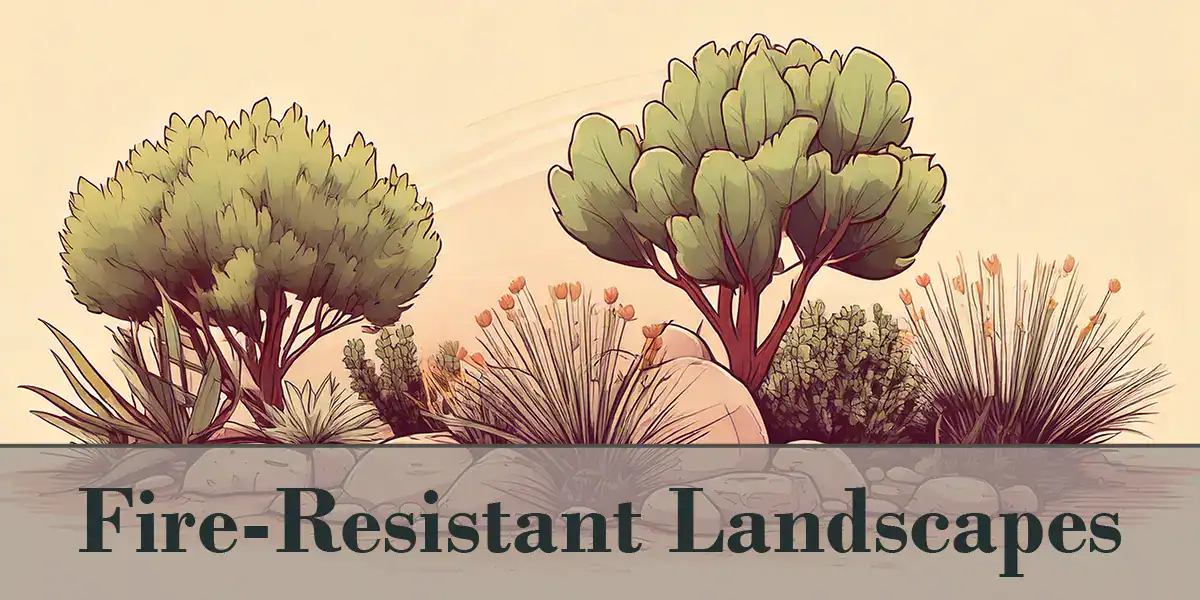California sees an average of 7,000 wildfires annually. Dry seasons, fierce winds, and hot summers create the perfect conditions for outbreaks. Homes located near forests, brush, or other flammable vegetation are at high risk.
Mitigating wildfire danger starts with your property. While nothing can protect a home from a raging inferno, fire-resistant landscape design can delay a fire’s spread and shield against smaller threats.
What Makes Landscaping Fire-Resistant?
Fire-resistant landscaping isn’t fireproof, but it gives you time to evacuate Muffy or for firefighters to respond. It includes:
- Plants with high water content that resist ignition.
- Minimal flammable materials (e.g., brush, dry leaves).
- Landscaping zones that create buffer areas around your home.
- Regular maintenance to reduce debris, overgrowth, or dry vegetation.
The goal is to create a defensible space around your house where vegetation and materials won’t feed a fire. California law requires that you maintain at least 100 feet of defensible space, but you can do even better without sacrificing aesthetics.

Defensible space around a home. Image courtesy of CalFire.
Landscaping to Avoid
Some landscaping choices increase your fire risk.
- Highly Flammable Plants: Eucalyptus trees, junipers, and ornamental grasses are like nature’s gasoline. Avoid planting these near your home.
- Combustible Mulch: Wood chips and bark mulch can ignite under heat. Opt for gravel or decomposed granite instead.
- Dense, Untamed Vegetation: Overgrown shrubs, dead trees, or piles of leaves are fuel for fires. Keep the yard free of debris (it will look nicer, too).
The Most Fire-Resistant Plants
Some plants retain moisture, are less flammable, and thrive in drought-prone areas. These include:
- Succulents: Aloe, jade plants, cactus, and agave.
- Ground Covers: Creeping thyme, ice plant, and lantana.
- Shrubs: California lilac, rosemary (hedging variety), and manzanita.
- Trees: Oak (native species), palo verde, and Western redbud.
Native plants, in particular, are an excellent choice because they’re adapted to the local climate, require less water, and are naturally fire-resistant.
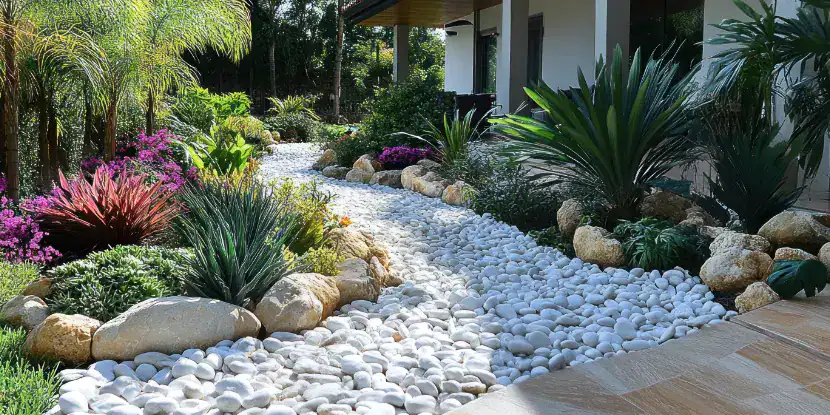
A backyard with decorative rocks and drought-tolerant landscaping.
Fire-Resistant Landscape Design
How you organize your landscape is as critical as the plants you choose.
1. Defensible Space
This is a designated area around your home that’s cleared of flammable vegetation and debris. It serves as a buffer zone against wildfires.
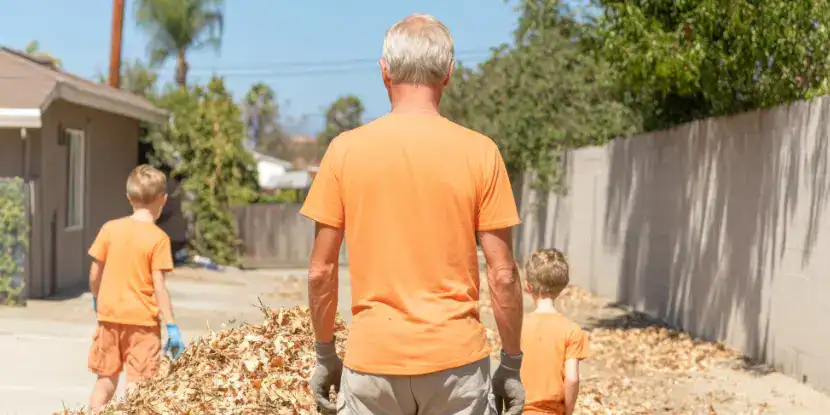
Regular fire prevention maintenance includes raking leaves, clearing debris, and pruning dead branches.
2. Plant Placement
Place fire-resistant plants closer to your home or structure, while keeping highly flammable species further away.
3. Mulching
Mulching can help soil retain moisture and prevent weeds, but avoid using combustible materials like pine needles or bark chips. Opt for rock or gravel. Gravel is typically composed of smaller, lighter-colored stones like crushed granite or river rock, which reflect more sunlight and absorb less heat than rocks.
A 5-foot perimeter free of flammable plants, placed around structures, offers added protection.
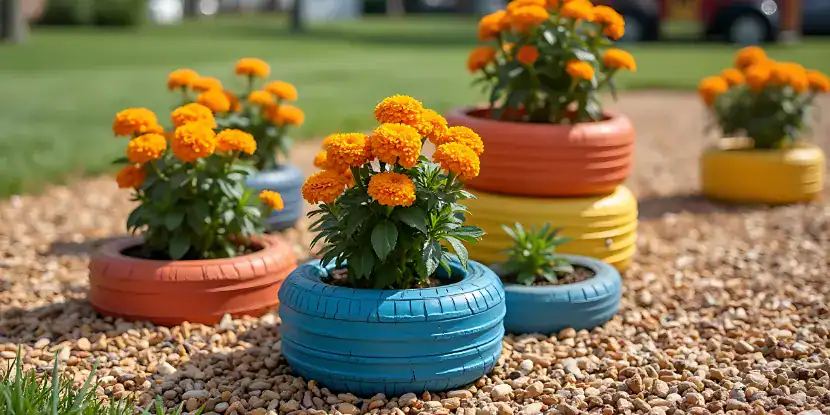
Mulching can help soil retain moisture and prevent weeds, but use non-combustible materials like rocks and gravel.
4. Xeriscaping
This landscaping technique prioritizes water-efficient, fire-resistant plants like succulents, cacti, and agaves. As a bonus, xeriscapes require much less irrigation and maintenance than traditional lawns.
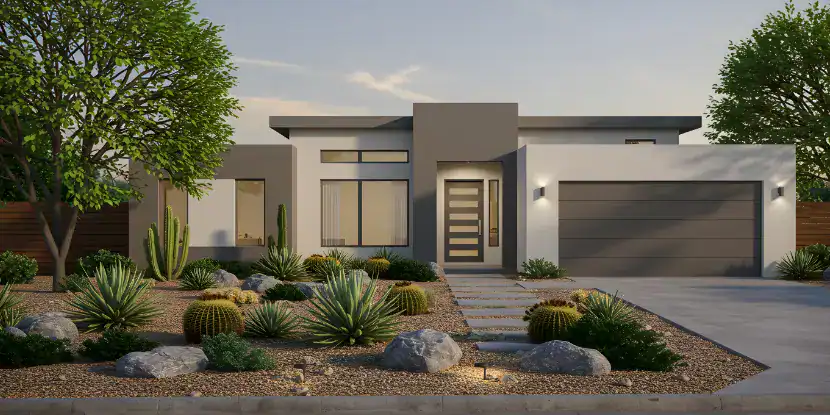
A well-designed xeriscape is uniquely beautiful, a standout in a sea of suburban sameness.
5. Rock Gardening
Rocks and stone pathways don’t burn. Use them to separate shrubs, trees, or fences from your house. A 5-foot perimeter free of flammable plants, placed around structures, offers added protection.
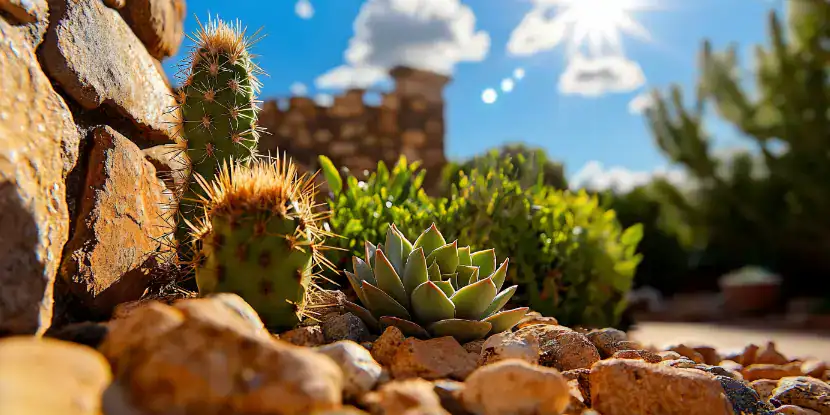
Artfully organized, a rock garden can be a stunning landscape focal point.
6. Planting Succulents
Succulents store water in their leaves, making them natural fire suppressors. Group them near your home or in areas prone to heat retention.

Succulents are natural fire suppressors. Low-maintenance, too!
7. Ground Cover
Low, sprawling plants like creeping thyme reduce exposed soil and act as a fire-resistant buffer. These are excellent for large yards where grass burns quickly.
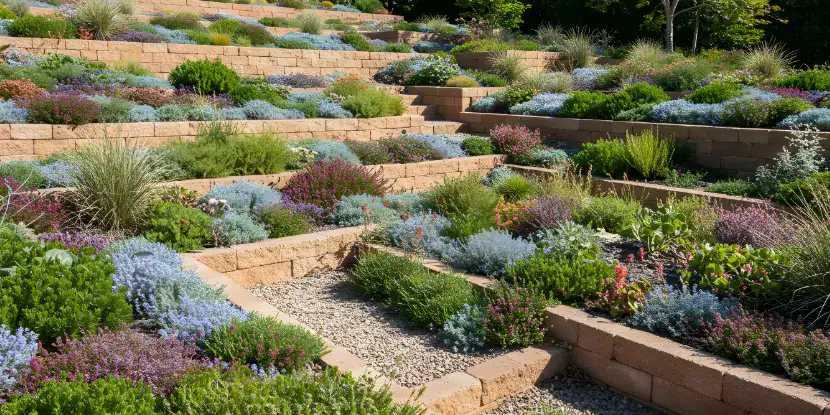
Low, sprawling, drought-tolerant plants reduce exposed soil and buffer against fires.
8. Hardscaping
Hardscaping is the use of non-plant materials in landscapes. This includes items like pavers, rocks, and gravel, which act as barriers between flammable areas and create defensible spaces.
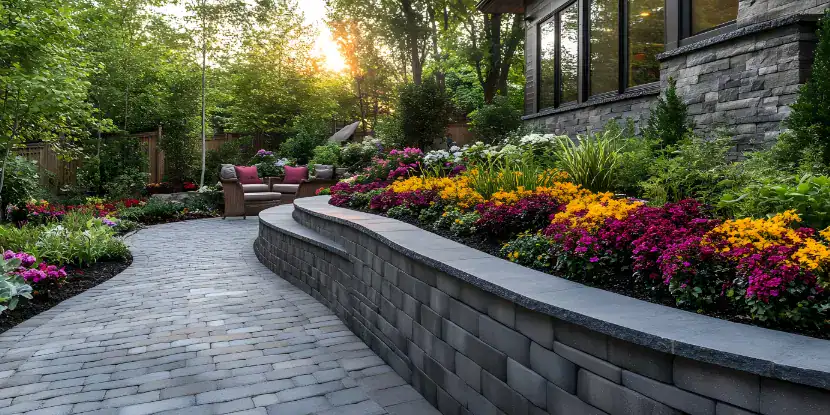
A hardscaped walkway made of pavers looks natural and inviting.
9. Zoning
Divide your landscape into zones of increasing fire resistance. Zone 1 (0–30 feet from your home) should prioritize rocks, succulents, and water features, while Zone 2 can include fire-resistant shrubs and trees.
10. Zen Gardening
Japanese rock gardens are popular for their minimalist design and focus on meditation. They typically incorporate rocks, gravel, and sand to create a calming and serene space, while creating fire-resistant elements in your landscape design.

Rocks don’t burn! Plus, a zen garden can bring a sense of tranquility to your yard.
11. Ponds & Waterfalls
Water features are natural fire barriers. Ponds provide habitats for aquatic plants and wildlife, promoting biodiversity, while waterfalls foster a soothing, relaxing atmosphere.

As truly non-combustible landscape features, ponds and waterfalls also provide habitats for aquatic plants and wildlife.
Putting It All Together
A well-designed fire-resistant yard doesn’t sacrifice beauty or personality. Here’s a checklist to get you started:
- Evaluate your current landscape. Remove risky plants like eucalyptus and junipers.
- Design zones with defensible space in mind. Prioritize near-home areas like patios and paths.
- Plant fire-resistant selections, focusing on native, drought-tolerant species like succulents or manzanita.
- Use non-flammable materials like gravel or stone for hardscaping.
- Stay vigilant with seasonal cleanup and maintenance.
FAQs: Fire-Resistant Landscaping
Q: What is defensible space, and why is it important?
Defensible space is the buffer area between your home and flammable surroundings. It slows down or stops wildfires and gives firefighters a better chance to protect your home.
Q: Are there any plants I should altogether avoid in fire-prone areas?
Avoid highly flammable plants like eucalyptus, junipers, and pampas grass.
Q: Do fire-resistant plants require special upkeep?
Most fire-resistant plants are low-maintenance. However, we recommend regular pruning and watering during dry spells for best results.
Q: Does xeriscaping mean my yard will look barren?
Not at all! Xeriscaping can be vibrant and lush when you use a mix of drought-tolerant plants, succulents, and decorative rocks.
Q: Can I use mulch in a fire-resistant landscape?
Yes, but choose non-combustible materials like gravel or decomposed granite instead of wood mulch.
Q: How close can trees be to my home?
Large trees should be at least 10 feet away from your home and pruned to maintain an overhead clearance of at least 6 feet from the ground.
Q: Will fire-resistant landscaping really protect my home in a wildfire?
No landscaping is entirely fireproof, but fire-resistant designs can significantly reduce fire spread and improve the odds of saving your home.
Where can I learn more about local regulations for fire safety?
Check with your local fire department or visit Cal Fire’s website for guidance on defensible space requirements.

